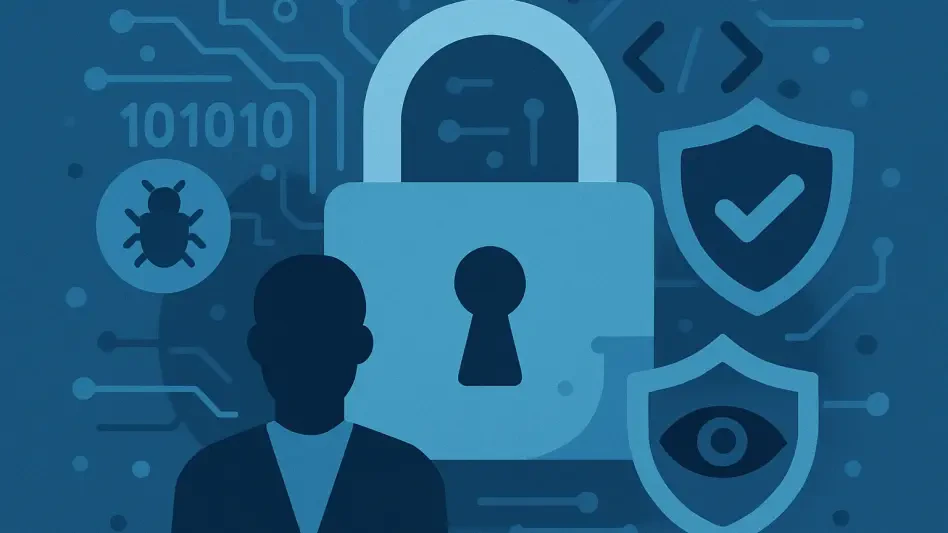The rapid advancements in technology, particularly artificial intelligence (AI), have underscored the growing importance of cyber resilience. This term no longer merely refers to compliance with existing regulations but incorporates robust strategies to ensure uninterrupted operations amidst cyber threats like ransomware attacks. Businesses and governments recognize the urgency of these measures, as evidenced by legislative initiatives such as the Cyber Security Resilience Bill aimed at bolstering cyber resilience. As we approach 2025, companies are increasingly aware that the complexity and scale of cyber threats are evolving, presenting an urgent need for more advanced and adaptive solutions to safeguard operations and data integrity.
The Dual-Edged Nature of AI in Cybersecurity
As AI technology progresses, it introduces both enhanced security measures and new vulnerabilities. The dual-edged nature of AI in cybersecurity has resulted in sophisticated solutions on one hand, while simultaneously giving rise to threats like deepfakes and AI-driven attacks. Deepfakes, known for their ability to create convincing fraudulent media, and AI-driven attacks represent emerging threat vectors that complicate the cybersecurity landscape and exploitation of AI models. Companies must develop sophisticated processes to evaluate and mitigate these risks. According to Mark Raeburn, Accenture’s cyber resilience lead in the UK, AI systems are particularly susceptible to adversarial machine learning, model theft, and data poisoning due to their opaque, black-box nature. This complexity makes it challenging to assess and manage the risks associated with AI-integrated applications, APIs, and endpoints.
Regulatory requirements will significantly influence cybersecurity strategies by 2025. Mark Raeburn emphasizes the need for businesses to integrate generative AI security into their governance frameworks and comply with regulations like the EU AI Act and the NIS2 Directive. However, the diverse regulatory landscape could present compliance challenges, especially for organizations operating across multiple jurisdictions. Ilia Sotnikov, security strategist at Netwrix, points out that organizations, particularly those with international footprints, will need to prioritize third-party cyber risk management in response to evolving cybersecurity regulations. The requirement for third-party cyber risk assessment highlights the necessity for robust, multilayered strategies to address and adhere to disparate regulatory demands across different regions.
Shifting Focus from Prevention to Recovery
Another emerging trend is the shift from focusing solely on preventing cyber-attacks to ensuring rapid recovery and business continuity post-attack. Ian Nicholson of Pentest People and Sam Peters, chief product officer at ISMS.online, underscore the importance of this shift. To achieve true resilience, organizations must undergo a cultural transformation that acknowledges the improbability of complete protection and instead strives to make attacks as difficult as possible for adversaries. Frameworks like ISO 27001 and stricter incident reporting requirements under regulations such as NIS2 will require companies to proactively prepare for and respond to cyber disruptions.
Education and training of employees are highlighted as vital components of cyber resilience. Conor O’Neill, CEO of OnSecurity, stresses that educating employees on risk management and incident response is crucial for bolstering the organization’s overall security posture. Despite advancements in AI-driven attacks, human error remains the most common threat. Thus, training on topics like phishing, password hygiene, and two-factor authentication will be imperative. Such training sessions must be ongoing and integrated seamlessly into the company’s broader cybersecurity strategy to be effective in mitigating human error and enhancing organizational resilience.
Expanding the Scope to Operational Resilience
The scope of resilience planning is expected to broaden from cyber resilience to operational resilience. Simon Hodgkinson, strategic advisor at Semperis, notes that enhancing overall resilience involves ongoing, comprehensive efforts that go beyond regulatory compliance. Organizations will need to focus on reinforcing their defenses and supporting their workforce, particularly in light of talent shortages and burnout among security professionals. Addressing these challenges may involve strategies like fostering a culture of resilience and providing continuous professional development opportunities to maintain a well-equipped, motivated cybersecurity workforce capable of handling evolving threats.
Moving into 2025, businesses will proactively implement cyber resiliency strategies for mission-critical functions. Martin Lewis of Wavenet points out that persistent cybersecurity breaches and ransomware attacks have demonstrated that even the most robust systems and processes are vulnerable. Companies will need to take significant steps to protect their critical functions from these evolving threats. This necessitates a thorough examination of existing security protocols and a continuous enhancement approach to close any potential vulnerabilities that adversaries might exploit. Proactively updating and maintaining these strategies will be essential in safeguarding mission-critical operations.
Practical Steps for Enhancing Cyber Resilience
The rapid advancements in technology, especially in artificial intelligence (AI), have highlighted the increasing importance of cyber resilience. Cyber resilience extends beyond mere compliance with existing regulations; it encompasses comprehensive strategies designed to ensure continuous operations despite facing cyber threats such as ransomware attacks. Both businesses and governments are acknowledging the criticality of these measures, as seen by initiatives like the Cyber Security Resilience Bill that aim to enhance cyber resilience. As 2025 approaches, organizations are becoming more aware of the evolving complexity and scale of cyber threats. This awareness underscores the urgent need for sophisticated and adaptive solutions to protect operations and maintain data integrity. The landscape of cyber threats is growing more intricate and formidable, requiring proactive and dynamic defenses. Thus, the commitment to cyber resilience is essential not only for the protection of current technological infrastructure but also to safeguard future advancements.







